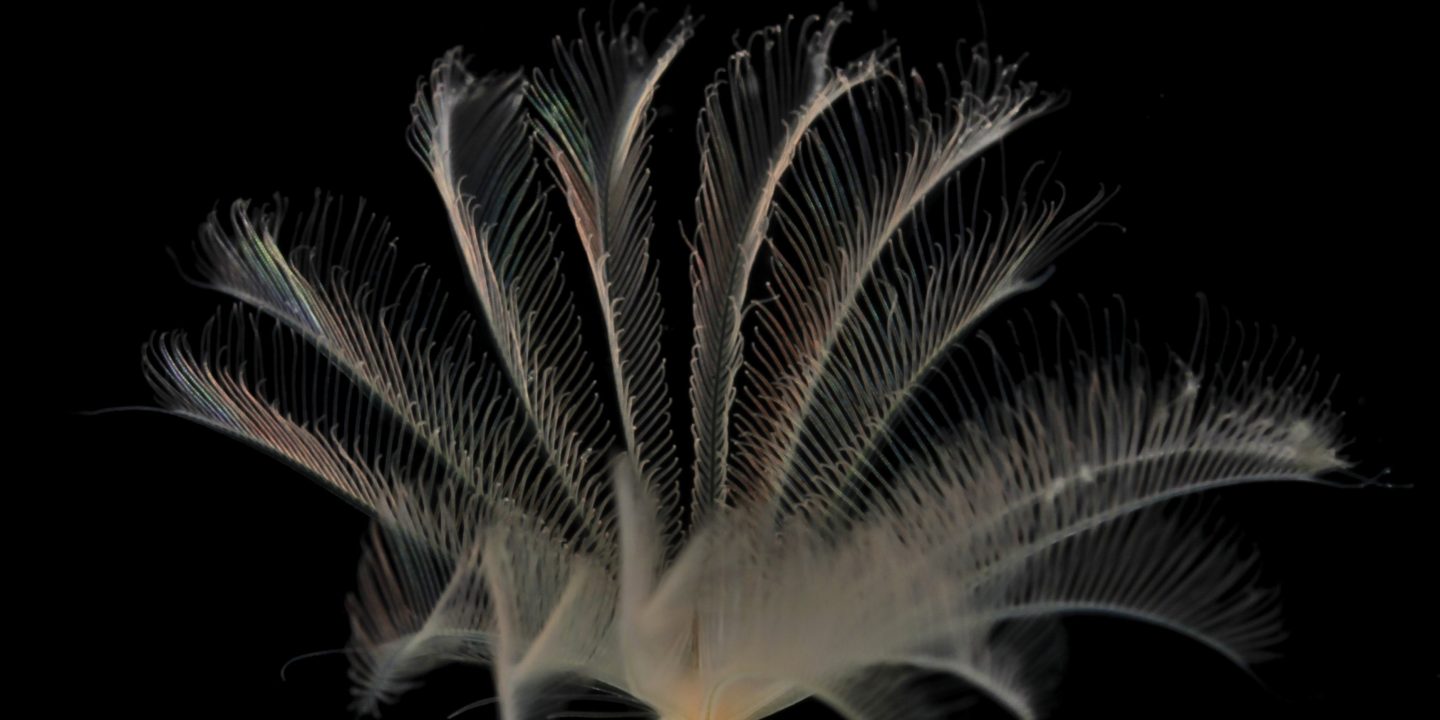This month it is time for another group of polychaetes, the family Sabellidae. Sabellids are present from intertidal to abyssal marine waters all around the world (Rouse et al. 2022). They inhabit both soft substrates such as sand or mud and hard substrates such as rocks or coral reefs where they live a sedentary life in tubes. Rare occurrence among polychaetes, which are nearly exclusively marine animals, some species of Sabellidae live in freshwater (Glasby and Timm 2008).
Sabellids range from a few millimeters up to 45 cm (Rouse et al. 2022). They are characterized by the crown of feathery radioles that they open in a fan to filter the water, earning them the names of “feather duster worms” or “fanworms”. The will usually quickly retract this crown inside their tube when the casual snorkeler or diver passes by, before timidly coming back out, so it sometimes takes a bit of patience to observe them out in the sea. However, when they reveal themselves, they can show beautiful colours and patterns. The most common and largest species in Norway, Sabella pavonina, has typically white radioles with diverse patterns of violet and/or orange stripes (Fig. 1). The much smaller Euchone rubrocincta shows off with a bright red pattern (Fig. 3), while other species will exhibit mesmerizing iridescent colours (Fig. 2, cover image).
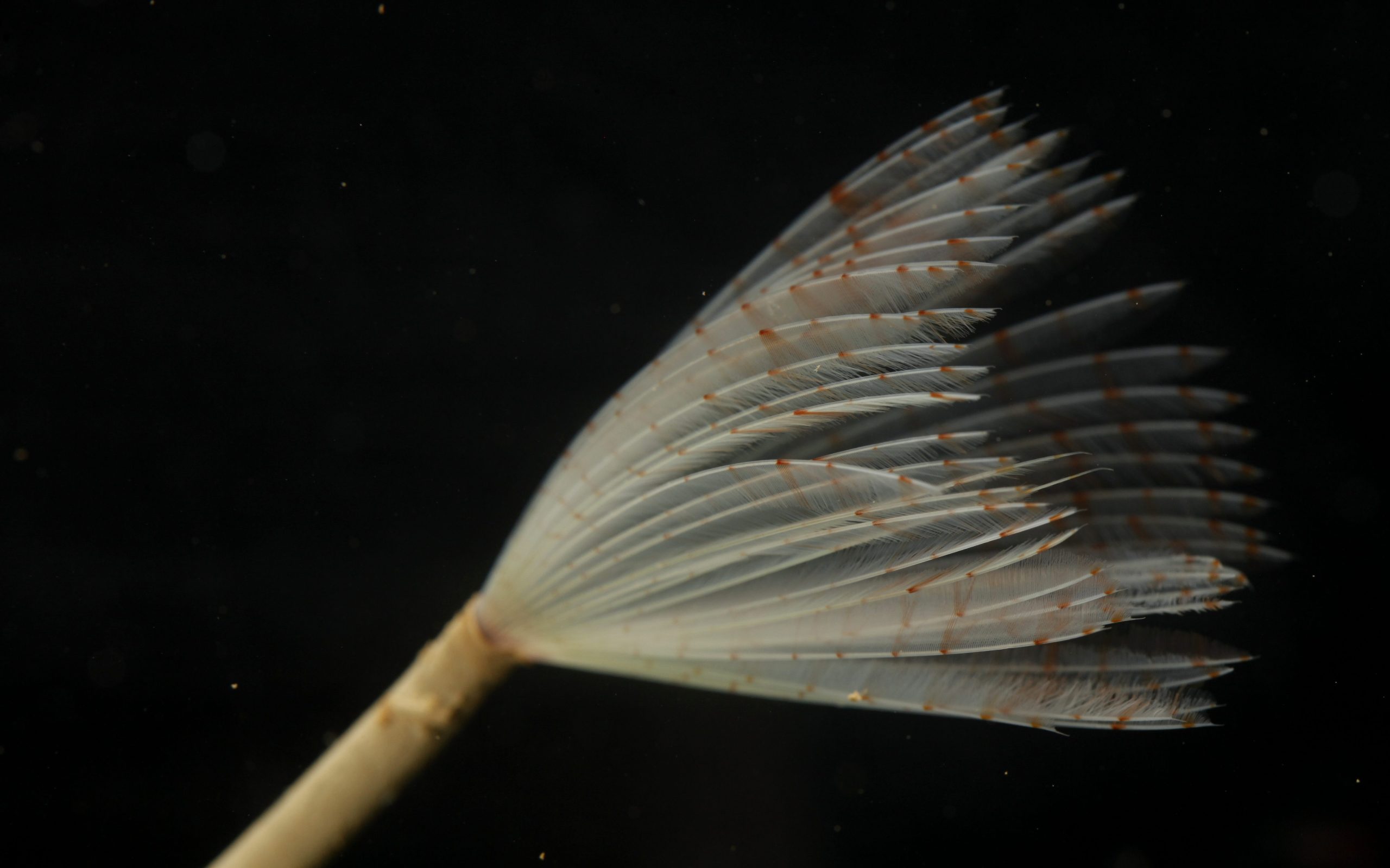
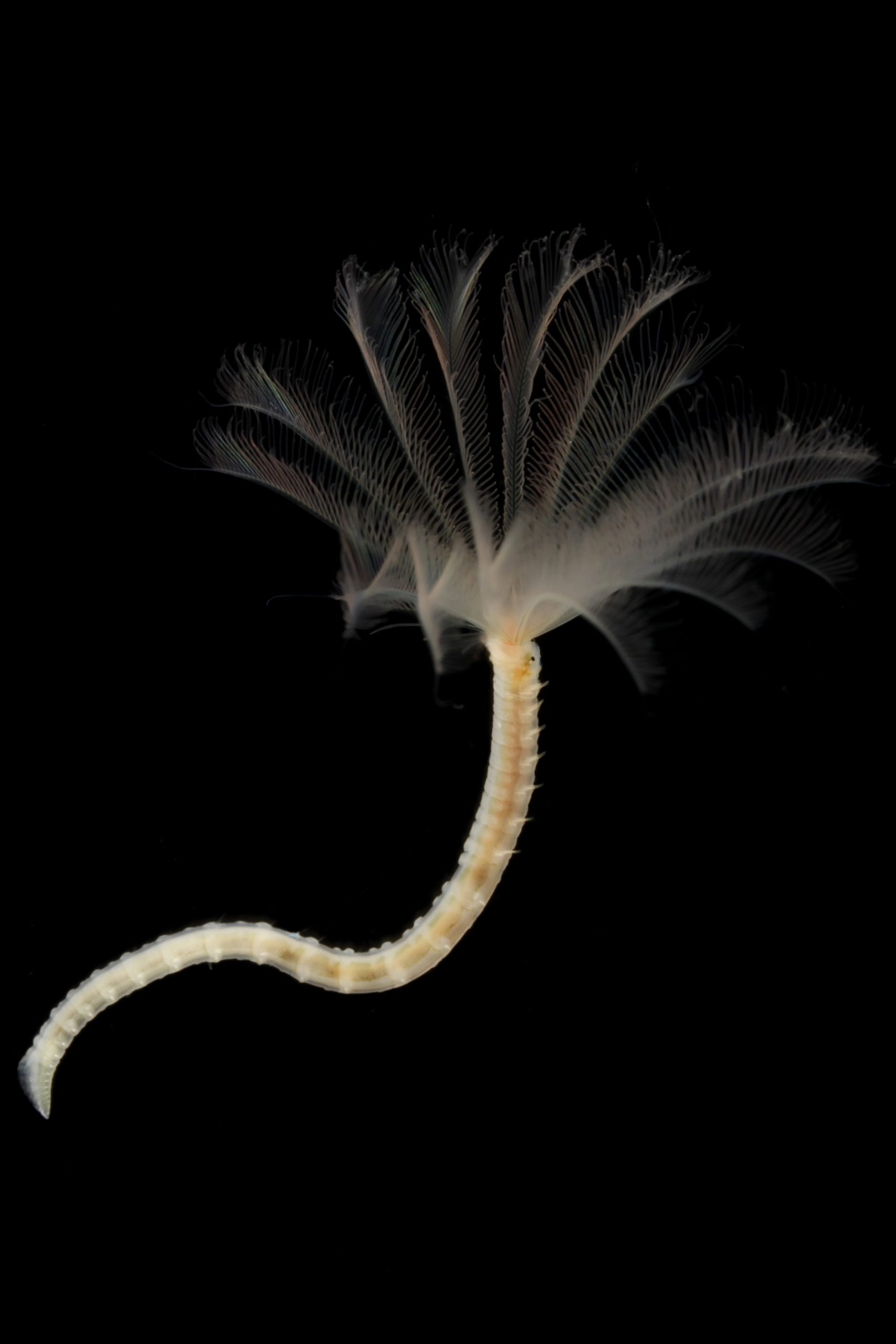
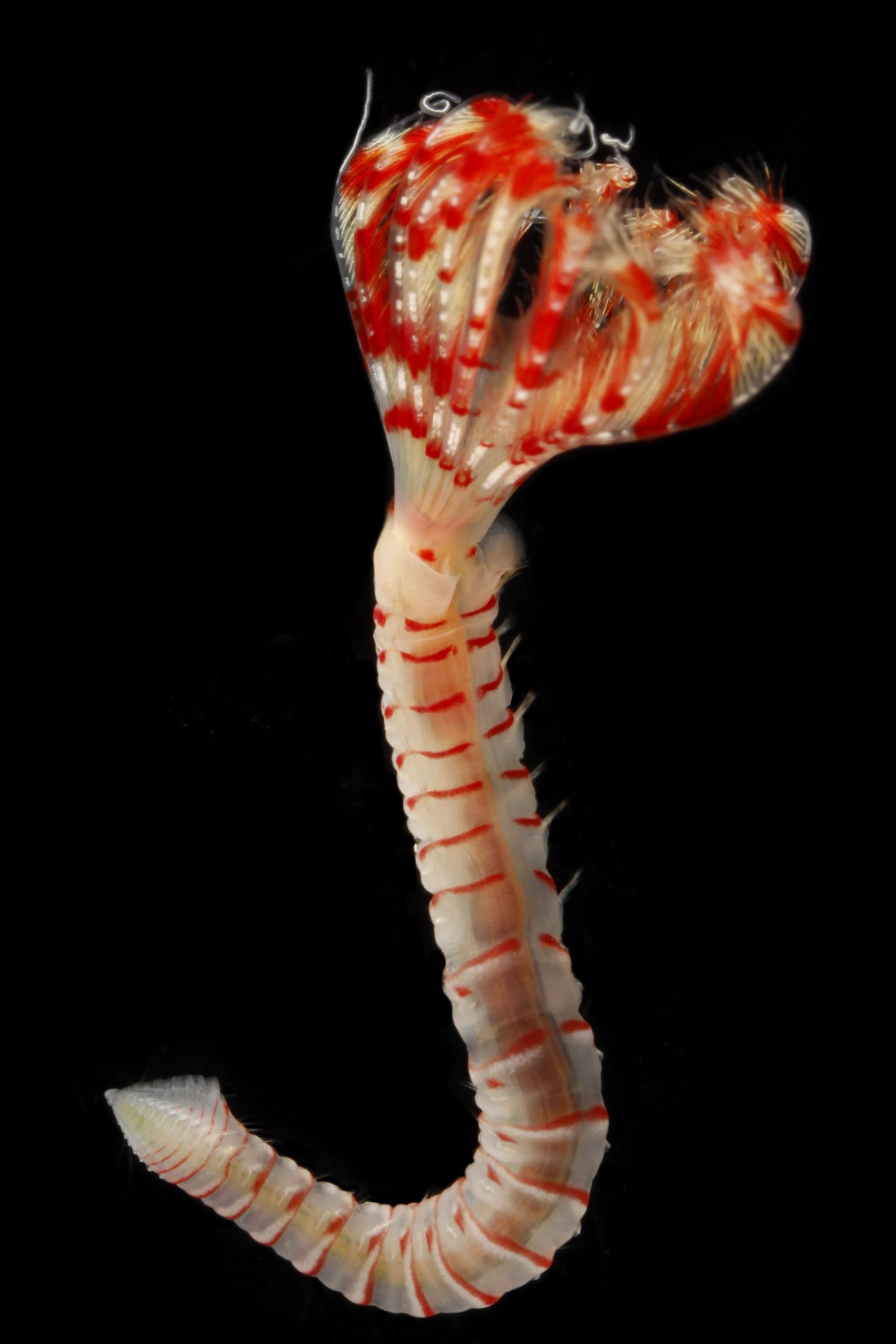
A particularly interesting feature within Sabellidae is the independent evolution of many different types of eyes in different subgroups (Tilic et al. 2020). For example, species in the genus Acromegalomma and Pseudopotamilla have large compound eyes situated respectively at the tip and on the edge of radioles (Capa et al. 2021). Species of Branchiomma have small paired compound eyes on radioles (Fig. 4). Other species may have eyespots on the body, even down to the posterior end, or no eyes at all.
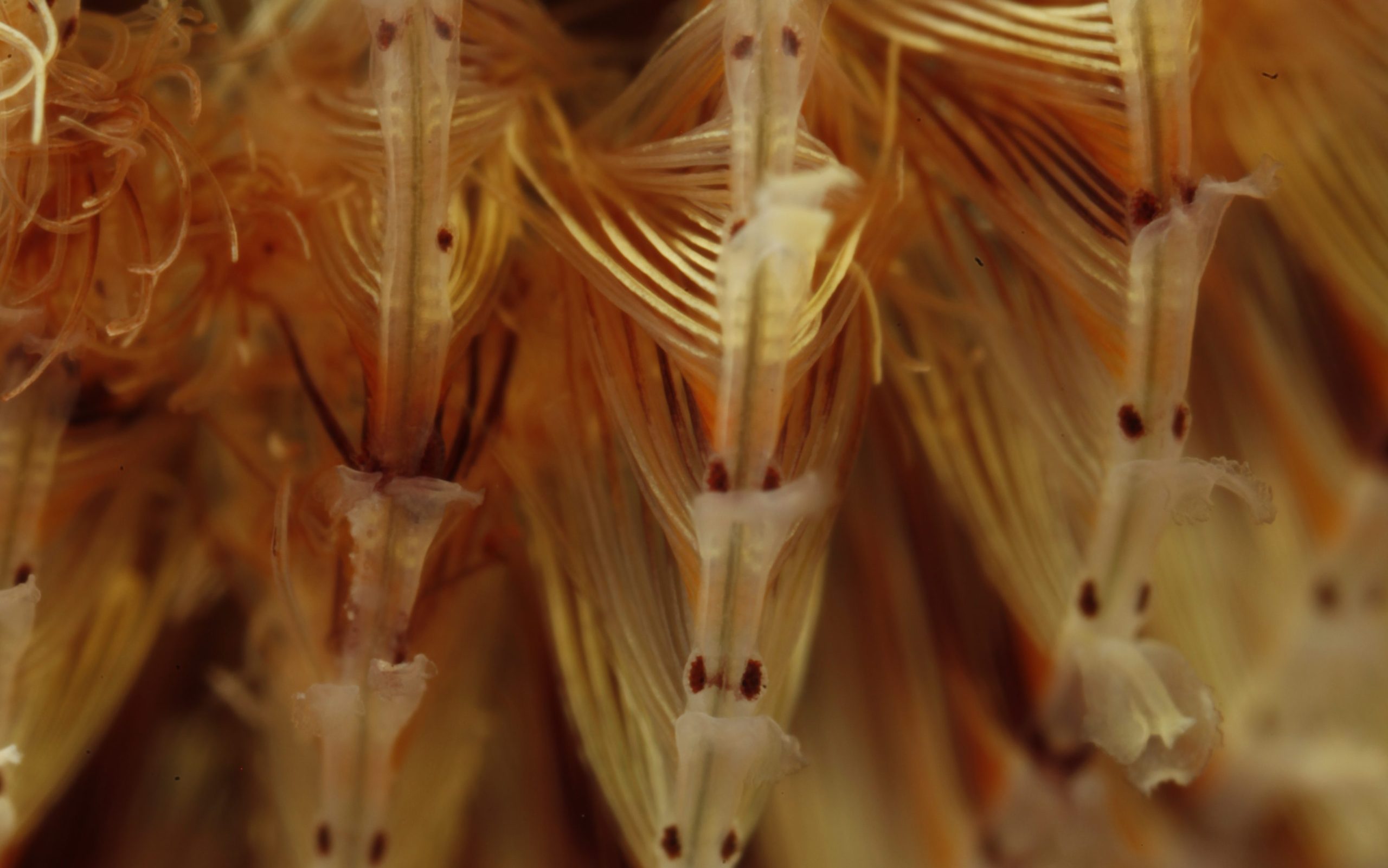
References:
Capa M., Kupriyanova E., Nogueira J.M.d.M., Bick A., Tovar-Hernández M.A. (2021). Fanworms: yesterday, today and tomorrow. Diversity 13: 130.
Glasby J.G., Timm T. (2008). Global diversity of polychaetes (Polychaeta; Annelida) in freshwater. In Balian E.V., Lévêque C., Segers H., Martens K. (Eds.): Freshwater Animal Diversity Assessment. Hydrobiologia 595:107-115.
Rouse G.W., Pleijel F., Tilic E. (2022). Annelida. Oxford University Press.
Tilic E., Sayyari E., Stiller J., Mirarab S., Rouse G.W. (2020). More is needed – thousands of loci are required to elucidate the relationships of the “flowers of the sea” (Sabellida, Annelida). Molecular Phylogenetics and evolution 151: 106892.
![]()
